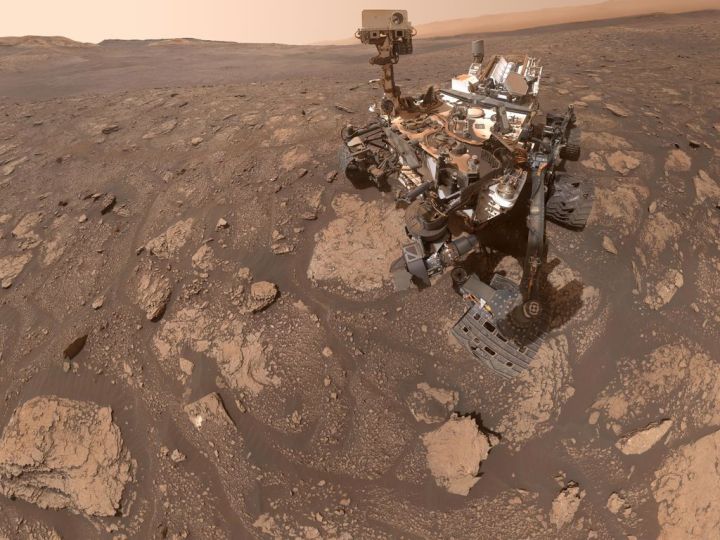
Something complicated is going on with the presence of methane on Mars. Methane is an important chemical for astrobiologists because it can be created by living animals and microbes, although it can also be created by non-organic processes as well. Previous studies have found indications of methane on Mars — but not consistently. Some instruments have found methane there, others have not. Now, a new study hopes to unravel this mystery by examining the differences in methane levels between Martian day and night.
Methane on Mars was detected above the surface of the Gale Crater by the Curiosity rover, but not in the high atmosphere by the Trace Gas Orbiter (TGO), a European Space Agency spacecraft in orbit around the planet which takes highly accurate readings. This came as a surprise to scientists.
“When the Trace Gas Orbiter came on board in 2016, I was fully expecting the orbiter team to report that there’s a small amount of methane everywhere on Mars,” said Chris Webster, lead of the Tunable Laser Spectrometer (TLS) instrument in the Sample Analysis at Mars (SAM) chemistry lab aboard the Curiosity rover. “But when the European team announced that it saw no methane, I was definitely shocked.”
To try to understand what was happening, Webster’s team considered the possibility that the methane was coming from the rover itself. “So we looked at correlations with the pointing of the rover, the ground, the crushing of rocks, the wheel degradation — you name it,” Webster said. “I cannot overstate the effort the team has put into looking at every little detail to make sure those measurements are correct, and they are.”
So the next possibility was that somehow both Curiosity and the TGO readings were correct, and that differences were due to Mars’s day-night cycle. The TLS instrument on Curiosity operates mostly at night, as it requires a lot of power, while the TGO operates during the day as it needs sunlight. Co-author John E. Moores explained that the methane could build up at night when the atmosphere is calm, and be dissipated during the day by the warmth of the sun affecting the atmosphere.
“Any atmosphere near a planet’s surface goes through a cycle during the day,” Moores said. “So I realized no instrument, especially an orbiting one, would see anything.”
Further experiments using Curiosity support this theory, showing that methane levels were effectively zero during the day in the Gale Crater.
So that may answer what is happening in this particular region, although there remains a larger question about the global methane levels on Mars. Unless Gale Crater is the only place where methane is leaking out of the rocks, which seems unlikely, some methane should still be visible to the orbiter.
The researchers are now undertaking more experiments to find out what is happening to the methane between the surface level and the atmosphere.



